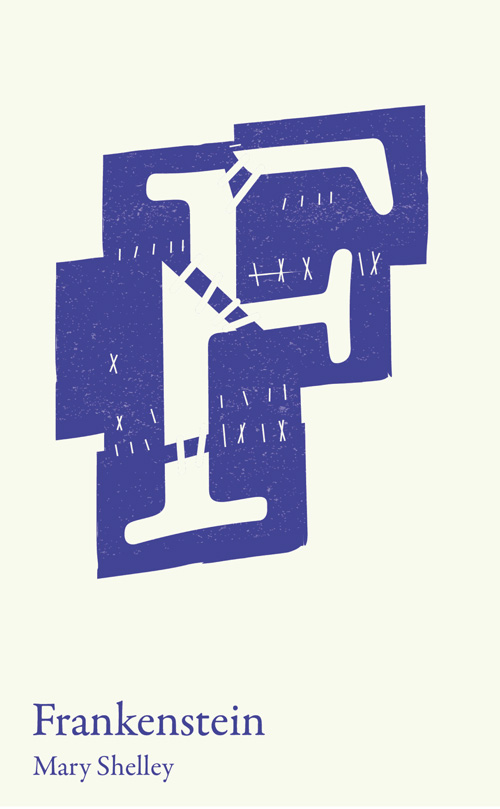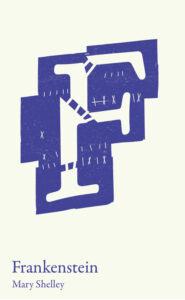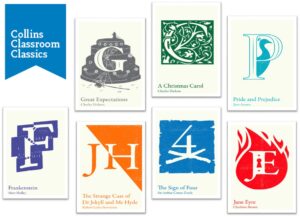It is not often in literature that you find yourself unexpectantly on the side of the monster. Mary Shelley’s powerful and thought provoking novel challenges our assumptions of good and evil and encourages the audience to see all creations as equal and deserving of love. Frankenstein’s ‘hideous wretch’ seeks only the maternal care it is immediately denied therein leading to fascinating and lively classroom discussion.
The novel cannot be understood fully without students becoming aware of the fact that its writer was a 20 year old woman who had already suffered greatly in her short life. Motherless and losing her own child at 17 she drafted the first edition in 1818 after the monster came to her in a nightmare. By the time she had re-edited it in 1831 she had lost another 2 children and her husband, and much of its softer language was lost. It is no wonder then that the novel is peppered with references to loss and grief. In her re-edit Shelley writes that ‘lives are decided by eternal forces we are unable to control’ which is a lovely place to begin discussion.
5 discussion points
- ‘Lives are decided by eternal forces we are unable to control’ – Shelley. Do students agree or disagree with this statement?
- They may like to look at the idea of fate, or nature verses nurture. Can students also see the irony of this statement given the fact that Victor creates a life out of body parts and electricity? Is this why he is punished? Do students think that perhaps writing this novel was a cathartic experience for Shelley? Why might that be?
- What factors would you expect to find in the genre of Gothic literature?
Ask the class to collect ideas, these may include:
- the occult,
- dangerous or terrifying occurrences,
- suspicious or unnatural behaviour,
- images of horror or decay,
- the macabre,
- supernatural,
- Science
Can students find a quote to support their findings or link it to an event in the novel? A homework task could be to create their own gothic setting or novel by storyboarding or mind mapping.
- How is the monster different to stereotypical ideas? Remember, Shelley herself stated, ‘I have an affection for it’.
You may like to keep this as a discussion task, or alternatively students could refer to Pages 55-56 in the Collins Classroom Classics Frankenstein book and create two lists as seen below:
| Negative descriptions of the monster | Positive descriptions |
| Catastrophe | grins |
| horror | One hand stretched out, seemingly to detain me |
| wretch | Selected his features as beautiful |
| Miserable monster | His hair was of a lustrous black |
How are the descriptions the antithesis of each other? How do you feel reading this? How do we feel about Victor? What do you think can be the outcome of this experiment?
- Explore the relationship between Victor and his monster, could it be described as a parent / child relationship?
You could prompt discussion using the following points:
- Does Victor fail as a parent? ‘Begone! I will not hear you. There can be no community between you and me. We are enemies’
- In what ways does he try to care for the monster?
- What does the monster want from him? ‘You, my creator, abhor me…am I not alone, miserably alone’
- How is it ironic that Victor says, ‘William, Justine and Henry all died by my hand’ yet has no guilt over his disgust at his own creation whom he wants dead
- Do you think this relationship reflects on Shelley’s own feelings at the time?
- The monster is both educated and articulate, sympathetic and revengeful. Can you think of any other monsters or monstrous characters in literature or in films you have seen that are also like this?
It may help to look at the superhero and villain genre here as many of the characters fit the gothic genre and have been ‘tampered with’ supernaturally.
5 Activities
- Creative response activity
Look at the monster’s speech on Page 107 of the Collins Classroom Classics Frankenstein book :
‘Be calm! I intreat you to make me happy, and I shall again be virtuous’
- Re-enact, direct, storyboard or animate this speech in pairs.
- Think about how it would be delivered: scary/scared, desperate/hopeful, pleading/warning
- Assess your peer’s versions, how do they differ? As a class can you decide on which you think is the most accurate and explain why?
- Further thinking
- Hand out whiteboards and ask students to come up with three statements about the novel which will then be directed to the classroom. This activity could be a quick starter or revision task if simple statements such as ‘Victor dies at sea’ are used. It could also be extended to more thought provoking questioning and follow up discussion with statements such as ‘there is a real possibility with advancements in modern science that a monster such as this could be created’. Further research and reading here could lead to the post-apocalyptic work of Margaret Atwood such as the MaddAddam Trilogy with its theme of genetic mutation, the current research and funding of real human clones, genetics or reference to shows such as Humans where human ‘synths’ are created.
- Obituary activity
Create an obituary for the funeral of a character of your choice. Look online for Victorian examples and remember that in the Victorian era funerals were as important as weddings. They made a spectacle of death and ensured that funerals were grand and fitting for the life of the one lost. Look at the obituary of Charles Dickens in 1870 as a classic example of these traits.
- October 29th is National Frankenstein Day!
Imagine you were planning a whole school activity day. What would you suggest? Could there be a themed menu? What would you study in lessons? What would the invitation letter look like? How would you make the day special / terrifying? Is there a dress code?
- Now that you have read the whole novel, can you choose your favourite quote and illustrate it in order to make a classroom display? Be prepared to discuss your choice and why you have decorated it accordingly.
By Joanna Fliski
Joanna Fliski has taught English Literature and Language to 11-18 year olds at an urban comprehensive secondary school for 10 years, she had the highest value added score for her students and was nominated for an outstanding teacher award. As well as teaching Drama and Media GCSE she was head of PSHE, trained teachers and is a behavioural specialist. Joanna currently teaches in primary schools in Bristol. She is also a freelance author, writing resources and teacher guides for the Cambridge IGCSE, creating schemes of work and contributing to a number of educational blogs.
Collins Classroom Classics
Just £1.50 each for schools!
New for 2019 are the Collins Classroom Classics: the complete 19th century novels accompanied by introductions and glossaries written by experienced teachers. They are designed to help students understand the context in which each novel was written in.





